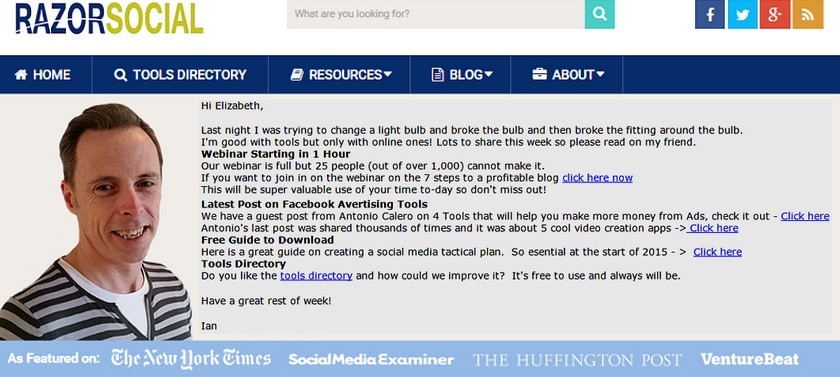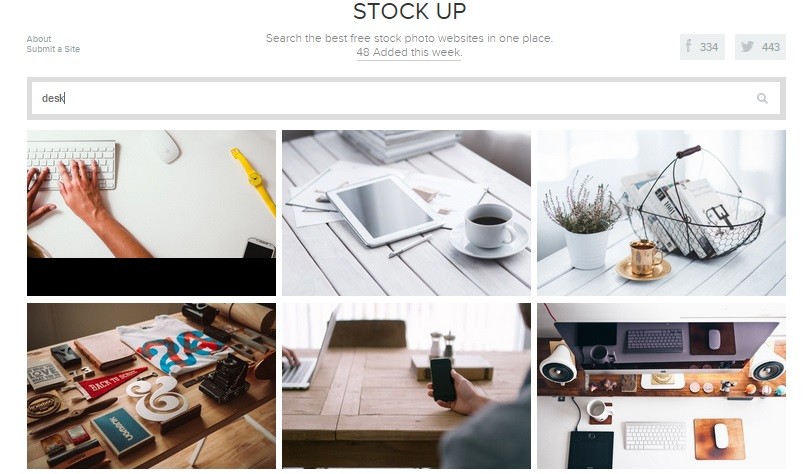Working as a startup is as challenging as it is exciting. Even if you have a good product, there's no guarantee that anyone will even know it exists, especially if you don't have high powered investors or a big budget. The good news is there has never been a better time to be a cash strapped startup!
There are many ways to promote your brand and expand your reach online without spending a fortune. You just have to know who you want to reach, be a bit creative and put some of the available free digital tools to work for you. With that in mind – here are my top digital marketing tips and ideas that will help you to grow your startup online presence on a tiny budget.
1. Be clever with your time:
There’s no denying that social media is crucial, both in terms of promoting your content, engaging with relevant people and supporting your SEO presence. However, it can be a real drain on your time, especially if you are a team of one. Increase productivity by outsourcing your social media to software! Make use of the fantastic free social media scheduling tools like Hootsuite and Buffer.

If you are not sure where to start when it comes to scheduling your content in advance, this article from Buffer has lots of real world examples to help you, including the ideal posting frequency and how to create a calendar of ready to share content. Hootsuite also offers an excellent, step by step Quick Start Guide which is a great place to start if you are not familiar with the platform.
2. Solve a problem with content marketing:
Identify a problem common among your target audience and help solve it by building something or creating valuable content. Achieve content marketing success by giving your target audience something of real value and they are much more likely to tell others about it too.
 While big brands are spending millions on distracting their customers with more ads, startups can get busy thinking of inexpensive ways to make themselves indispensable to their audience.
While big brands are spending millions on distracting their customers with more ads, startups can get busy thinking of inexpensive ways to make themselves indispensable to their audience. 

As well as trying to get their attention in the right place at the right time, put some of your effort into creating something great that your audience will seek out, recommend to their friends and use regularly. You could create ‘How To’ video guides or provide downloadable templates that make your audience’s life easier in some way.
“Does it provide real value or solve a problem? This is the holy grail of content marketing. If you can solve a problem, you can make your content indispensable.”
My favourite example of a startup solving a problem and generating its own success is Unsplash. This genius initiative transformed a previously little known, struggling American startup called Crew into a flourishing, household name.
Through searching for imagery for their own website they spotted a serious need – it was virtually impossible for them to find any high quality, affordable images. So they hired a photographer, put the surplus images from the shoot onto a Tumblr feed and
posted a link on Hackernews about the images available for anyone to use freely. It resulted in a surge of web traffic and huge flurry of enquiries to the freelance network Crew.
3. Build and nurture with email:
Every visitor to your website represents an engagement or conversion opportunity but I’m surprised by how many websites still don’t offer visitors the option to sign up for email updates. Email marketing is a cheap way to send relevant and targeted messages and nurture relationships with your prospects and customers.
Make it easy for web visitors to sign up by embedding an email sign up form on your website and use a free, email marketing tool like Mailchimp. Give people a reason to share their data with you by offering exclusive content via email or a short, free email course on a relevant topic. Check out Razor Social, founded by social media tools expert Ian Cleary, for some brilliant examples of email marketing strategy and techniques. Website visitors are enticed to sign up on the Razor Social homepage to get access to the latest free social media tools resources, helpful tips and downloadable guides. Check out one of Ian's newsletters below:

Another innovative startup is actually based around a daily email to subscribers. A Song A Day is the brainchild of Shannon Byrne and delivers a song based on your musical preferences to your inbox every day.

4. Create a professional visual identity for your brand and content:
The importance of visuals and engaging imagery cannot be overstated. It’s simply not good enough to slap a generic stock image onto a blog post as a formality. Research consistently shows that content that includes quality, original visual or video content drives higher engagement and shares than text only content.
The great news is you don’t have to have a subscription to expensive graphic design software to create sleek and professional brand visuals and promotional materials. Canva is a stunning example of a free graphic design tool that you can use to create professional visuals and graphics. Canva’s Design School includes a comprehensive guide to the basics of branding. The guide comes complete with clear instructions on how to design a consistent brand image across all the visuals you create.
And where can you find great images that don’t cost you a penny?
Unsplash blazed the trail but there are now many sites offering free, high quality images for commercial use. Check out this Free Stock Image Search Engine from Steve Benjamins, the creator of Site Builder Report. It aggregates results from all the free image sites so it’s a great resource and time saver too:

5. Take control of your own SEO:
Install Webmaster Tools and Analytics Tracking (free versions of both are provided by Google and Bing) on your website and resolve any crawl errors or technical website issues as they arise. Monitor traffic and engagement levels and understand where traffic is coming from and where improvements are needed.
There are some step by step instructions to help you set up Google Analytics here and Bing Webmaster tools here.
Google has also produced a series of more light-hearted, entertaining videos to explain some of the more technical aspects of Google Analytics in simple terms. View the Google Analytics in Real Life videos here:
Once you have the technical side of SEO covered, it’s time to focus on your website content and what visitors will actually see. Write well and write often on relevant topics and themes so that your website appears in search engines for relevant searches by users. Blogging is key for SEO but it’s also a great way to demonstrate your expertise and this is important if you want your brand or product to be taken seriously. Provide content, interviews or guest blog for relevant websites to earn quality, organic external links too.
For excellent tips on content marketing and blogging, bookmark Copyblogger, Hubspot and the Content Marketing Institute.
Startups are versatile by their very nature and this is a key strength. While you may not have money to burn like bigger, established companies, you have a great idea coupled with a wealth of free digital tools at your fingertips and that can be much more valuable.
You can find lots more help and advice about building your brand on the web at http://digitisethis.com/blog.
 Elizabeth Malone-Johnstone is a Chartered Marketer and Digital Marketing Consultant based in London. She has experience of working with FTSE100 companies and leading marketing software providers, as well as not-for-profits, independent retailers and startups. She founded the digital marketing consultancy, Digitise This, in 2014 to provide expert digital marketing advice and support to startups and SMEs in the UK and Europe. You can follow Elizabeth on Twitter at @digitisethisuk to stay up to date on all things digital!
Elizabeth Malone-Johnstone is a Chartered Marketer and Digital Marketing Consultant based in London. She has experience of working with FTSE100 companies and leading marketing software providers, as well as not-for-profits, independent retailers and startups. She founded the digital marketing consultancy, Digitise This, in 2014 to provide expert digital marketing advice and support to startups and SMEs in the UK and Europe. You can follow Elizabeth on Twitter at @digitisethisuk to stay up to date on all things digital!